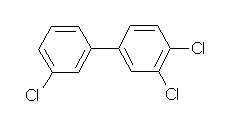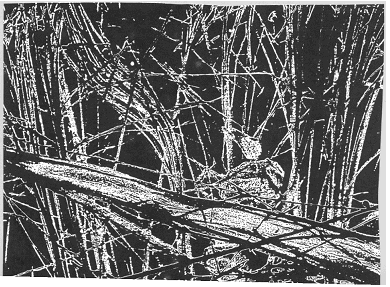
Special Chemicals
There are several chemicals that are both common and require some special considerations in risk assessment: Lead, PCBs, Dioxins/Furans, TPH, asbestos.
Lead
Lead is both a possible carcinogen and a potent neurotoxin, especially in young children. "Organic lead" is not so common these days. The "lead" in leaded gasoline was an elemental lead with alkyl (usually ethyl) groups attached. It was readily absorbed through the skin. Inorganic lead is typically elemental lead, often alloyed with other metals. Lead oxide was a common constituent of paint. Lead is a constituent of solder and will leach from solder if the pH is low. Lead is neurotoxic to young children at levels much lower than its suspect carcinogenic properties, so you would look for a RfD.
You will not find an RfD for lead. The target is young children for whom it is quite toxic, so the lead from your site or discharge must be considered along with the lead the children are exposed to from other sources. Therefore you would first compute the addition from your site to the burden of exposed children, then run an "Integrated Exposure Uptake Biokinetic Model" (IEUBM) or AKA Integrated Uptake and Biokinetic model (IUBK). Here a site with information and links to get the model and other guidance. Just glance at this to get an idea about what all is involved. IEUBM site. As with other toxic metals, the physical and chemical form (especially oxidation state) are quite important. Laboratory analysis does not always state these clearly.
Chlorinated Dibenzo-p-dioxins (CDDs) and Dibenzofurans (CDFs)
Or just "dioxins and furans." Earlier we had a picture of "dioxin" Chlorinated furans have a somewhat similar structure and chemistry. Neither are manufactured on purpose anymore. They are a byproduct or contaminant from many industrial processes that work with aromatic compounds and chlorine, like pesticide manufacture. CDDs and CDFs are a common anthropogenic (that's Greek for "man-made," a word we are not allowed to use in English any more) contaminant, for example from poorly regulated incinerators. As you can see from the dioxin picture, there are about 8 locations where a hydrogen could be replaced by a chlorine. Many different combinations of chlorines are made during the random "synthesis by mistake." The 2,3,6,7 arraignment is extremely toxic to some species and is most often meant when the media says "dioxin." All told there are over 200 variations or "congeners" possible. The toxicity of these varies from great to small. Sorting out all the different congeners would be an impractical task.
Generally an analysis is performed that determines if the substance is dioxin or furan and the number of chlorines, e.g. hexachloro, or heptachloro-etc. Then a table of Toxicity equivalents (TEQ's) relates the toxicity relative to TCDD. Here a site with some lists of TEF on pp 35-37 (pdf count). Note the TEQ for "dioxin," 2,3,7,8-TCDD is 1.0.
PCBs
Polychlorinated biphenyls (PCB) had many uses: dielectric fluids in electrical equipment, fire retardent paint, plasticizer in children's toys, and many others. PCBs have various arrangements of chlorines attached, here's a PCB with 3 chlorines:

Both the physical/chemical properties and their toxicity vary with the number and location of the chlorines. PCBs were marketed in the US chiefly by Monsanto under the trade name Aroclor. Following the word Aroclor was a number, Aroclor 1260 for example was 60% chlorine by weight, 1248 was 48% by weight. Although the specific Aroclor was a mixture of compounds, most of the toxicology has been done by these broad classifications. Hence we find Aroclor 1260 is considered carcinogenic and Aroclor 1016 has a RfD. You will also find some data for "PCBs" which would be some collection of all non-specific PCBs. Aroclor 1254 is the most common of the Aroclors. PCBs are an environmental hazard, they are very persistent and bioaccumulate. When incinerated they make CDDs and CDFs. Take home message is that you would like to get the chemical analysis of your samples to indicate which of the specific Aroclors are present, then do the toxicology on each. If your data only says "PCBs" you may get stuck using the most toxic of the Aroclors in your analysis.
TPH and Petroleum.
Petroleum and petroleum products are a mixture of chemicals. The mixture varies from day to day during manufacture and once spilled it varies with time as the more volatile components evaporate. The best way to handle petroleum toxicity is to analyze exposure to the particular constituents. Sometimes data is presented as TPH, that is Total Petroleum Hydrocarbons. TPH analysis is cheap and fast. But you get what you pay for. TPH lumps paraffins that are edible with toxic and carcinogenic benzene. TPH is also subject to many interference from naturally occurring organics.
There have been several valiant attempts to separate TPH into broad classes that are amenable to cheap chemical analysis but are still relevant to toxicity and environmental fate. Most of these attempts have failed for one reason or another. Often regulators group hydrocarbons into BTEX or volatiles, semi-volitales, and heavier hydrocarbons. Another classification is: Gasoline Range Organics, Diesel Range Organics and Residual Range Organics. These grouping serve many good regulatory purposes and are here to stay. They are not too valuable for scientific risk assessment.
Asbestos
Asbestos is a commercial term that covers 6 or so different minerals. All are toxic, but some more so than others. The commonest asbestos minerals are chrysotile, amosite, anthophllite, and crocidolite. Asbestos was rarely used by itself, but was incorporated into materials, such as insulation, fireproofing, brake shoes and thousands of other products. Material that contains asbestos is often known as asbestos containing material (ACM). (You will find deposits of chrysotile in several locations in Alaska, including some mining sites.) Asbestos is toxic because it is a fibrous material and the physical properties of the fibers cause some of them to lodge deep in the respiratory tract, and the chemical properties keep the fibers from breaking down from normal physiological processes. On the other hand, if the ACM is intact and does not release fibers, it is not a toxicological hazard, as long as it is maintained so that it does not release fibers. Here is a micrograph of asbestos mineral:

The width of the field is about 8 microns. The chief asbestos-caused diseases are cancer of the chest cavity, lung, and an emphysema-like disease, asbestosis. The latter two are vastly exacerbated by cigarette smoking.
Exposure to asbestos is measured by fibers per cc, or f/cc. Usually only fibers longer than 5 microns are counted. Current workplace standards are 0.1 f/cc. It is difficult to count fibers to a higher standard than 0.01 f/cc, but ambient air in cities has between 0.001 and 0.0001 f/cc.
Historically about 10,000 workers each year died from asbestos-related diseases. It has killed more workers than coal mine accidents, train wrecks and far more than any chemical hazard. This was not well known because asbestos did not come into wide use until World War II and the school construction boom of the 1950's, and the fact that the asbestos diseases have a latency period of 20 to 40 years. Another obscuring factor was the synergy of asbestos with cigarette smoking. Because of the awful history, asbestos is very tightly regulated as a workplace health hazard. For schools and public buildings, the environmental risk has also been tightly regulated and "risk assessments" are done according to those regulations and policies, rather than by the NAS paradigm. On the other hand, many hazardous waste sites, especially if there are buildings or dumps, have asbestos and the disposition of that is part of the overall risk management of the site.
End of submodule.